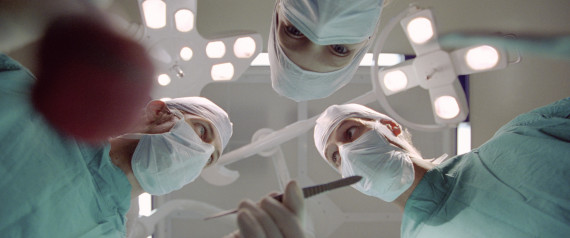Game-based Social Skills Assessments: Making the Play for Better Emotional Health
Gamification and Social Skills Development can Work Hand in Hand to Improve Emotional Well Being and Outcomes
by Melissa DeRosier
Educators and parents are now seeing that games—long thought to be a waste of kids’ time—can be powerful learning tools.
Games show promise in improving students’ problem solving skills, learning motivation and engagement, and their test scores.
They are also well-suited for assessments, as demonstrated in the 2010
National Education Technology Plan where U.S. Secretary of Education
Arne Duncan called for more research about how “assessment technologies,
such as simulations, collaborative environments, virtual worlds, games,
and cognitive tutors, can be used to engage and motivate learners while
assessing complex skills.”
Although games have been used mainly for learning and assessment in
the core academic subjects, they hold significant promise for other
areas, such as social skills.
Long-Term Effects of Positive Peer Relationships
Social skills assessments (SSA) identify children’s social skills
strengths and deficits, enabling teachers, counselors, and other
providers to address areas of weakness through social skills training.
Through social skills training, children can learn to build positive
relationships with their peers, which helps increase children’s grades,
test scores, and self-esteem, as well as improve their physical and
mental health.
In contrast, the effects of poor social skills are staggering. Children with poor social skills are more likely to:
- Bully others or be bullied
- Perform poorly academically
- Have more absences from school
- Drop out of school
- Have lifelong mental and physical health issues
- Become sexually promiscuous
- Engage in criminal behavior
- Commit suicide
- Have unstable relationships
Limitations of Traditional Social Skills Assessments
Effective SSA do three things:
- Identify children who have social skill deficits and would benefit from social skills training.
- Monitor their progress throughout the training and decide if any changes should be made to better address the child’s needs.
- Determine if the child’s social skills improved at the end of the training, and if not, what the next steps should be.
Assessments during and after the training are important,
since it may take months or longer for positive changes in children’s
social skills to translate into improvements in peer relations, mental
health, and academics.
SSA are only as good as the data they collect, and no traditional data collection method exists that provides high quality data and is time- and cost-effective.
For example, behavioral rating scales, the most popular data
collection method, rely on self-report by children and observations by
teachers. Behavioral rating scales are quick and cheap to administer and
have low training requirements, which is beneficial for time-pressed
teachers and money-strapped schools.
However, the data they provide is limited. The scales are not
engaging to children, so children have low motivation to provide
thoughtful, honest responses or to respond at all, which would affect
the quality and accuracy of the data. Children may pick the answer that
is most socially appropriate regardless if it reflects the child’s true
behavior. Observer bias also plays a role as teachers may let their
opinion of the child influence how they assess the child’s behavior, and
children may behave differently when teachers are around compared to
when they are with their peers, so the teacher would not be able to
assess the child’s social skills accurately.
The Promise of Game-based Social Skills Assessments
This is where game-based SSA come in. Game-based SSA allow data
collection that is time- and cost-efficient because teachers need
minimal training to administer the assessments, and it can be
administered to many children at once. And because games are capable of
tracking changes in a child’s behavior over time, they can be used for
progress monitoring and evaluation.
Game-based SSA are engaging to children, which helps make the data
more reliable and accurate. They can also simulate common social
situations, allowing a teacher to see how a child will react in a
specific situation that the teacher may not have observed the child in,
such as witnessing bullying or dealing with a peer who is upset.
Moreover, game-based SSA can incorporate “stealth assessment”—that
is, the game collects data without the child realizing it. Children
don’t change their behavior when they’re unaware they’re being assessed,
making the data more accurate, and the child is focused on the
situation, which provides a better approximation of how he or she would
behave in a similar real-world situation.
Stealth assessment also uses information about children’s actual
behaviors to manipulate facets of the game to assess children at
different levels, responding to each child’s unique strengths and
weaknesses and getting a better picture of the child’s social skills.
Examples of stealth assessment include the number of times a particular
object or character is clicked on, amount of time before a specific
action is taken, and the order of actions during problem solving.
Game-based Social Skills Assessments Considerations and Best Practices
From our own research developing a game-based SSA, Zoo U, we’ve
unlocked some important considerations and best practices in creating an
effective game-based SSA.
First, it’s important to consult relevant research to decide which
social skills to target and how to define them. A well-designed
game-based SSA should rely heavily on subject matter experts—experts in
child social development, education, child mental and behavioral
health—to develop the content and scoring procedures that form the
foundation of the virtual SSA environment.
Setting is important when designing a game-based SSA. We chose a
virtual school-like world where children learn to be zookeepers. We
selected this setting because it’s similar, but not identical, to a real
school, so it allowed us to present virtual social situations analogous
to common elementary school experiences. A setting too similar to real
school life may have been boring for children, and some children may
have actually experienced the social situations in real life, which
would bias how they interacted with the software in ways we couldn’t
know.
In SSA, skills are measured based on the child’s in-game choices and
responses. Even though a section of the game may target specific social
skills, each section should incorporate multiple skills, because in real
life social interactions are complex and social skills are used
concurrently. Response options should make the right answer difficult to
figure out. For example, the game could present several options with
all responses being more or less correct, with differing levels of
appropriateness.
Game-based SSA should provide scenarios similar to real-life
situations that children encounter, and like the real world, the choices
that the child makes should influence how others in the scene respond
and what subsequent options are available. Games can score the sequence
itself, in addition to each individual menu choice.
The game should generate assessment reports based on the child’s
choices, which tell the teacher how the child compares to his or her
peers in the classroom and the country. A well-designed report can also
inform teachers when a child may be gaming the system or not trying his
or her best as indicated by clicking through dialogue without listening
to it, clicking around too much, and picking answers at random.
While encouraged in popular entertainment games, these behaviors
produce inaccurate data for assessing social skills. Game-based SSA
should include accuracy checks to catch this behavior, generate warnings
when this happens, and provide teachers with recommendations on how to
proceed with the child. It is critical to design a game-based SSA so
that the assessment and gameplay are not at odds with each other.
Choosing a Game for Assessment
Make sure that any game you employ for a SSA is based in solid
research that demonstrates its validity and reliability. You must hold
games to the same accuracy standards as any other SSA approach or you’ll
be collecting data that undermines your social skills training goals. A
cheaper or flashier game without this research base may look good, but
if it results in a failed social skills training, you’ll have to
implement another training to make up for it. You will then be spending
more time and money than if you had opted for a research-based game from
the start.
* Melissa DeRosier, Ph.D., is the founder and CEO of 3C Institute,
a research and development company that develops social-emotional
learning products for children, adolescents, and parents for use in
schools, clinics, and community agencies, and partners with outside
organizations to develop customized web-based applications for their
programs and research. The company’s products, including the
recently-released book, Social Skills Assessment through Games: The New Best Practice, can be found at 3C Marketplace.
 1933 - 2014
1933 - 2014 1933 - 2014
1933 - 2014







